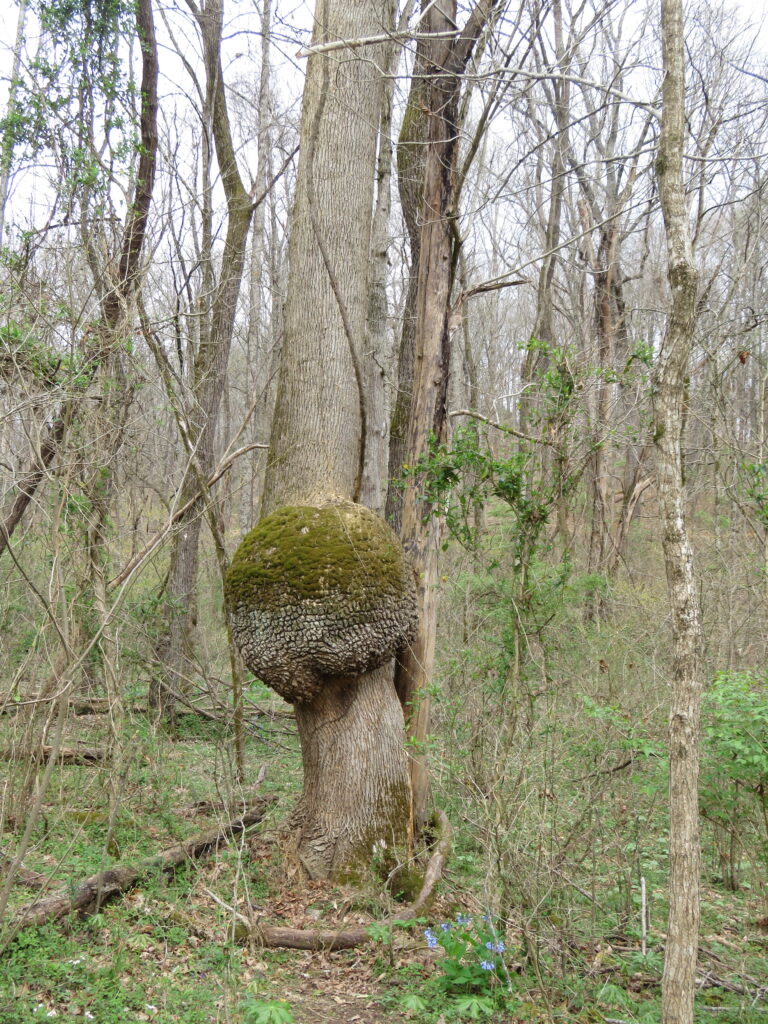
An unusual swelling on trunks of trees and occasionally on large branches are “burls”. They’re round, swollen-looking growths on tree trunks and large scaffold branches. Should or shouldn’t you be concerned? Burls are not uncommon and can be found on cherry, maple, oak, buckeye, ash, willow, locust and walnut in Eastern forests. Root burls may also be found on rhododendron and laurel.
The cause of tree burls is a bit of a mystery. Plant scientists don’t know why they occur. In general, burls develop because of invasions (bacteria, fungi, and insects) or stressors (freeze damage, mechanical, and environmental injury). Certain tree species are genetically predisposed to develop one or more burls while other nearby trees may not likely form any.
Are burls bad for trees?… Usually not. Burls typically don’t do any harm to trees. On rare occasions, a burl may disrupt the tree’s vascular (circulatory) system. As it turns out, though, getting rid of them may pose the significant risk. Cutting burls would leave large wounds on the tree’s trunk and branches, which could lead to an infection or weaken the tree’s structural stability.
Burls may occur on tree roots and go largely undetected. Also, it is best not to remove the bumps on tree branches or tree trunks. However, you may clip away sprouts that emerge out of the burls.
Burls themselves generally don’t cause problems for your tree, but you should try to determine the root of the growth and address it. Consult a certified tree arborist to determine the cause and solution.
Since burls can be a result of insect or fungi damage, inspect for signs that point to an insect or disease infestation. Look for small holes in the trunk and branches, sawdust, or insects crawling around. Also, inspect the trunk or branch wood for evidence of decay including cavities, missing bark, root damage or wounds.

Finally, burl wood is expensive and treasured by woodworkers and carpenters alike. Consult a Certified Tree Arborist in your state or city by searching the International Society (ISA) directory.

 Posted in
Posted in 
